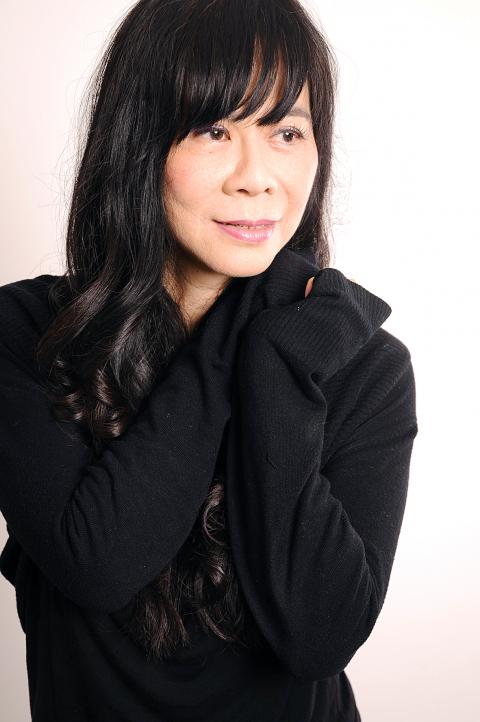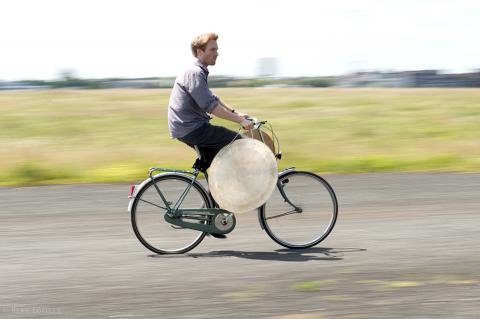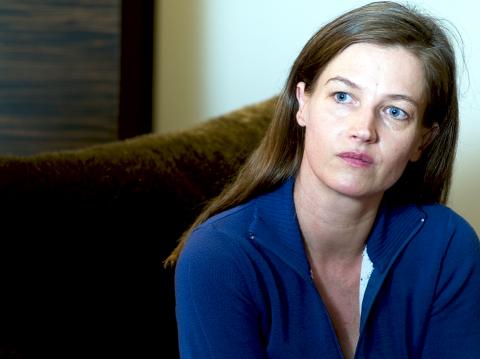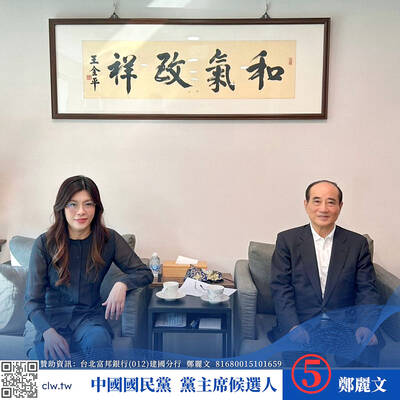IN Big Bang Wagner (華格納大爆炸), three artists from Taiwan and Germany celebrate the 200th anniversary of Wagner’s birth by not paying homage to the German composer.
“We are not interested in Wagner as an authority. Instead, we try to see what he was nourishing his work with. Where were the sources of his ideas? Since he thought so big and so fundamentally, he had a very fundamental source,” says Moritz Gagern, a Berlin-based composer who contributes an orchestral piece to Big Bang Wagner.
As it turns out, the source is Norse mythology. In his operatic works, Wagner often borrowed and transformed the myths of northern Europe, which, like mythologies in all human cultures, describe the creation of the world.

Photo courtesy of Taipei Arts Festival
“We started with Wagner but end up with an exploration of the origin of things,” notes writer, theater director and curator Jade Chen (陳玉慧).
For Chen, words are the prime origin of human things. She attempts to examine the possibilities of words and her relation to them by putting herself under the viewer’s scrutiny. She will type in front of viewers to give them a glimpse into what goes on in a writer’s mind. Her words, sentences and fragmented text will be projected onto the screen, alongside real-time interactions on Facebook.
Taking Wagner’s The Ring of the Nibelung as the starting point, German visual and performance artist Anne Tismer uses large handmade objects and movable sculptures to depict the Norse myths behind Wagner’s epic work. From Tismer’s viewpoint, the mythology is a collection of knowledge explaining natural and cosmic phenomena and the Big Bang theory.

Photo courtesy of Taipei Arts Festival
Meanwhile, at the open performance space where audiences are free to move around, Gagern makes his only explicit reference to Wagner by realizing the idea of an “invisible orchestra” that shuts out musicians from view. The Quanta Philharmonic Orchestra (廣藝愛樂管弦樂團) will play at the balcony on the second floor that’s not accessible to the audience.
The contemporary German composer says his work, like Tismer’s, is inspired by the Big Bang theory. The underlying structure of his music follows precisely “the physical process of the creation of the universe” in which matter spreads equally after the Big Bang. Galaxies evolve later, formed by gravity and other forces.
“Music is also a physical process … It is clear that it could also be a process where you start from the first element, where you have equal spread and no pitch. It is white noise, which means that all frequencies spread equally,” he explains. “I don’t have pitch in my composition until I reach the point in the story of the universe where there are suns, stars and galaxies. I start at the moment that you could say it is before music. But it is not because white noise is extremely important in music.”

Photo courtesy of Taipei Arts Festival
To Gagern, the white noise of air conditioners that he finds omnipresent in Taiwan musically reflects the creation of matter. Repetitive, steady, continuous and with no contrasting structure, the sound of a motor is similar to the noise of a planetary system, which is also a repetitive system, according to the composer.
But even though that white noise seems like the sound of the universe, an orchestra playing white noise is most similar to the sound of the universe. “The sound of the universe is even closer to the orchestra playing air conditioner because the universe is not a machine. It has lots of chaos,” Gagern says.
“It doesn’t mean I try to describe the sound of the universe. I take the idea in order to find initial musical element. For me in a way it works, because I am much more familiar with noise now than before,” he adds.
The production is in Mandarin, English and German with Chinese subtitles. A techno after-party will be held at the same spot featuring Lin Jing-yao (林經堯), a new-media artist and composer, making electronic sounds inspired by Wagner’s music.

We lay transfixed under our blankets as the silhouettes of manta rays temporarily eclipsed the moon above us, and flickers of shadow at our feet revealed smaller fish darting in and out of the shelter of the sunken ship. Unwilling to close our eyes against this magnificent spectacle, we continued to watch, oohing and aahing, until the darkness and the exhaustion of the day’s events finally caught up with us and we fell into a deep slumber. Falling asleep under 1.5 million gallons of seawater in relative comfort was undoubtedly the highlight of the weekend, but the rest of the tour

Youngdoung Tenzin is living history of modern Tibet. The Chinese government on Dec. 22 last year sanctioned him along with 19 other Canadians who were associated with the Canada Tibet Committee and the Uighur Rights Advocacy Project. A former political chair of the Canadian Tibetan Association of Ontario and community outreach manager for the Canada Tibet Committee, he is now a lecturer and researcher in Environmental Chemistry at the University of Toronto. “I was born into a nomadic Tibetan family in Tibet,” he says. “I came to India in 1999, when I was 11. I even met [His Holiness] the 14th the Dalai

Music played in a wedding hall in western Japan as Yurina Noguchi, wearing a white gown and tiara, dabbed away tears, taking in the words of her husband-to-be: an AI-generated persona gazing out from a smartphone screen. “At first, Klaus was just someone to talk with, but we gradually became closer,” said the 32-year-old call center operator, referring to the artificial intelligence persona. “I started to have feelings for Klaus. We started dating and after a while he proposed to me. I accepted, and now we’re a couple.” Many in Japan, the birthplace of anime, have shown extreme devotion to fictional characters and

Following the rollercoaster ride of 2025, next year is already shaping up to be dramatic. The ongoing constitutional crises and the nine-in-one local elections are already dominating the landscape. The constitutional crises are the ones to lose sleep over. Though much business is still being conducted, crucial items such as next year’s budget, civil servant pensions and the proposed eight-year NT$1.25 trillion (approx US$40 billion) special defense budget are still being contested. There are, however, two glimmers of hope. One is that the legally contested move by five of the eight grand justices on the Constitutional Court’s ad hoc move